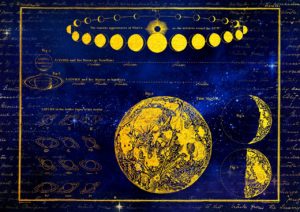
Okay, so I have a right to change my mind, right? I made changes to the Earth Epic Calendar because some things didn’t seem to fit right.
I had previously been telling people that they could choose between using the Millenium and the Century and between the Milliday and the Centiday. I’ve now dropped the Century and the Centiday from being official units of measure on the Earth Epic Calendar.
Why? Because of the rule of KISS–Keep It Simple, Stupid. (Or Sweetheart.) I felt that this change would make the calendar much more intuitive to understand.
So, this calendar is designed with the Rule of One Hundreds in mind. One hundred secs equal a milliday, 91 or 92 days equal a quarter (okay, not quite 100 but close), one hundred epochs equal a genesis, and one hundred geneses equal an eon.
But the system already forces exceptions. If I continued the rule of one hundreds with decimal time, I would have centidays (roughly equivalent to 15 minutes), and, um, myriadays that are 8.6 seconds. Yeah, not useful, right? (Just try to watch football, basketball, and hockey with those units. Especially with those famous game-changing plays at the buzzer.) Units more useful to us would be millidays (roughly 1 1/2 minutes) and secs (equal to 0.86 seconds). That’s easier for us to imagine, since they are most similar to
Likewise, two hundred fifty centuries or twenty-five millenia equal an epoch. But when you think about it, which is easier for us to imagine–250 centuries or 25 millenia? I would say 25 millenia, because 25 is smaller than 100 while 250 is bigger–and in my view, an awkward number. We’re used to thinking in terms of millenia because most world calendars encompass several millenia (even if they have to go before the start of year 1 of their calendar). Plus, the year 11.719 can easily also be read as 11,719, which is the number of years since the start of this epoch. And for those who don’t always want to be formal can just refer to this year as the year 719 of this calendar. Just don’t confuse the year 700 (2000 CE) with 0.700 (the approximate year the ancient city of Jericho was built, or 9000 BCE).
The exceptions to the rule can be easily recognizable with the prefix Mill in Millenium and Milliday since that prefix is associated with “one thousand.” As for 91-92 days in a quarter, well, there’s not much I can do about that unless I want my years to be 400 days each (which was probably true of the Earth two eons ago when days were 22 hours each–but not now). And as for there being 25 millenia in an Epoch, well, I’m sticking to my plan that takes advantage of the 100:1 difference in time years ago between the dawn of the dinosaurs and the dawn of the genus Homo.
Oh, and you might notice that I’m using the word Epoch when I’d previously use the word Age. That is also to avoid confusion. Remember when I talked about the axial precession as a unit of time? That period, roughly 25,000 years, corresponds to a period of time when the view of the universe appears to rotate through the twelve signs of the zodiac. Most astrologers would say that the Earth is in the Age of Pisces. But the reference to an age here is only about 2,000 years, with roughly 25,000 years being the period of time the Earth passes through all twelve signs of the zodiac. So if I were to call that 25,000 period of time an “age,” it would be confusing to people familiar with astrology. Therefore, to keep consistent, I chose the next measure of time above Age on the Geological Time Scale, which is Epoch. Coincidentally (are there coincidences?), the Holocene Age and the Holocene Epoch are one and the same, and the Holocene dates from the beginning of this Epoch that began 11, 719 years ago.
This calendar went through many refinements before I made this calendar public, and it might go through a few more. This is the biggest one n years, but fundamentally, it changes the calendar very little. I need to make a couple more changes in order to be completely consistent across the board. I need to redo the history of human civilization so that it shows years in the millenium.year format instead of the century. year format, and I need to change the calendar link that is also responsible for the date that appears on this website.